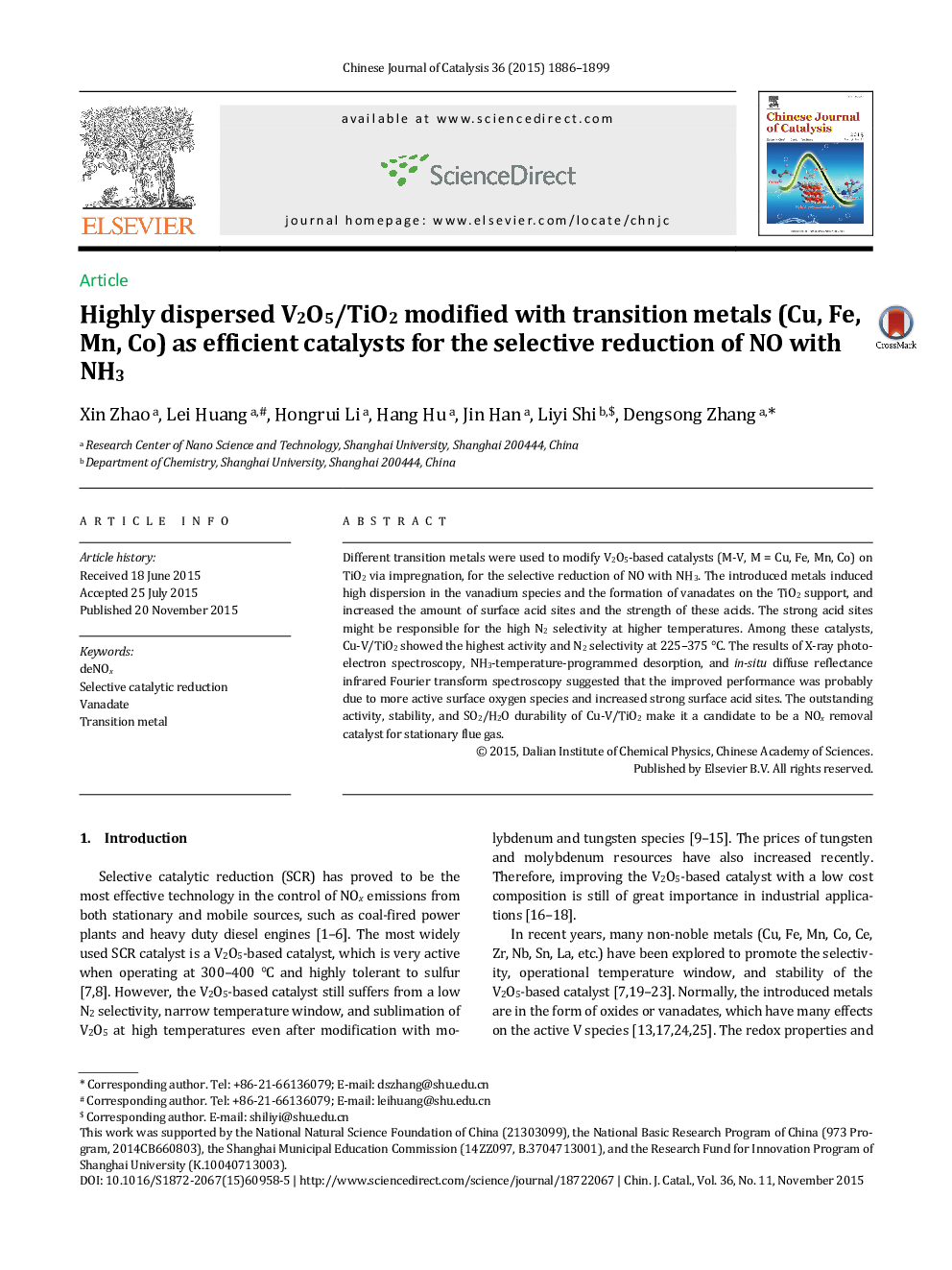| Article ID | Journal | Published Year | Pages | File Type |
|---|---|---|---|---|
| 59807 | Chinese Journal of Catalysis | 2015 | 14 Pages |
Different transition metals were used to modify V2O5-based catalysts (M-V, M = Cu, Fe, Mn, Co) on TiO2 via impregnation, for the selective reduction of NO with NH3. The introduced metals induced high dispersion in the vanadium species and the formation of vanadates on the TiO2 support, and increased the amount of surface acid sites and the strength of these acids. The strong acid sites might be responsible for the high N2 selectivity at higher temperatures. Among these catalysts, Cu-V/TiO2 showed the highest activity and N2 selectivity at 225–375 °C. The results of X-ray photoelectron spectroscopy, NH3-temperature-programmed desorption, and in-situ diffuse reflectance infrared Fourier transform spectroscopy suggested that the improved performance was probably due to more active surface oxygen species and increased strong surface acid sites. The outstanding activity, stability, and SO2/H2O durability of Cu-V/TiO2 make it a candidate to be a NOx removal catalyst for stationary flue gas.
Graphical AbstractHighly dispersed V2O5/TiO2 modified with transition-metal copper shows high activity, N2 selectivity, high stability and H2O/SO2 durability for the SCR of NO with NH3.Figure optionsDownload full-size imageDownload as PowerPoint slide
